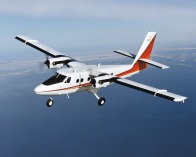HOW IS A CERTIFIED NAAA APPRAISAL PERFORMED?
A Certified Aircraft Appraisal begins with an extensive examination of the exterior and interior of the aircraft. Special attention is given to the condition of the airframe, engines, propellers, instrumentation and paint finish.
Airframe and engine modifications are noted, as well as any present damage to the aircraft.
Service Bulletin and Airworthiness Directive compliance are reviewed, as well as the status of any historical damage and subsequent repairs.
The avionics and related flight equipment are unique to each aircraft-the installation and condition of such equipment can alter the value of the aircraft dramatically.
The panel layout, optional systems, deicing systems, cabin and interior condition are also carefully evaluated.
The logbooks and related documentation are thoroughly reviewed to determine the historical care or abuse that the aircraft has experienced. This careful review is important in determining the true value of the aircraft since details of its maintenance history can have a significant impact.
Frequently, what is not recorded in the logbooks is equally important. For instance, flight time that has not been logged, missing annual inspections, missing or defaced log entries, and undocumented modifications can seriously affect the value of the aircraft.
There is quite a difference between keeping an aircraft in top condition, and merely maintaining a minimal level of airworthiness.
NAAA VERSUS BLUEBOOK VALUES
WHAT IS THE DIFFERENCE BETWEEN A CERTIFIED NAAA APPRAISAL AND AN AIRCRAFT PRICE GUIDE SUCH AS THE BLUEBOOK?
The differences are enormous and to answer this question would take many pages, but let us briefly look at some key differences.
Aircraft price guides are published, marketed, and distributed by book publishing companies. The fact is they do not appraise aircraft; they do not even gather or generate their own data.
Rather, they simply send out a questionnaire every 3 months to subscribers of their books and ask a few questions, which are very vague. From these questionnaires the book publishers generate their database.
An interesting point to consider is this, nowhere on these questionnaires do the price guide book publishers request information regarding:
- The aircraft’s damage history
- Engine or airframe modifications
- The physical condition of the airframe, including corrosion, etc.
- Avionics and related flight equipment
- Propellers and time since overhaul
- Engine overhaul status
- Condition of de-ice equipment, instrumentation and other components
- Inspection status of the aircraft (i.e./ the aircraft may have been out of
Annual Inspection for some period of time and/or there may be non-compliance with Airworthiness Directives or mandatory Service Bulletins
It is truly a mystery how one could generate an accurate database of aircraft values without any indication regarding the condition of the airframe, make and model of the avionics, damage history, airframe or engine modifications and all of the other important value points listed above.
The National Aircraft Appraisers Association is the only organization in the world that considers all of these factors in its database. Additionally, its members who have physically evaluated the aircraft verify the information while performing the appraisal. The end result is an extremely accurate database that is verifiable.
FACTORY AIRCRAFT
How much is a Factory Aircraft worth? It is critical to keep in mind that regardless of the year, make and model, NO TWO AIRCRAFT ARE THE SAME.
Most of the private propeller aircraft today are more than 30 years old.
Over the years, these aircraft have been modified, upgraded, and refurbished to the point where many look and perform like a new plane. But others have had less updating.
Maintenance accounts for a significant portion of the cost of ownership. An aircraft due for a major overhaul is worth considerably less than one that has been recently overhauled. An aircraft with a damage history has less value than a plane with a clean history. The NAAA appraisal process and software objectively assess the value of any damage history and components that might require routine maintenance.
HOMEBUILT AND EXPERIMENTAL AIRCRAFT
Homebuilt and Experimental aircraft are the fastest growing segment of general aviation. But, what is a Homebuilt aircraft worth for insurance or re-sale?
Quality of craftsmanship and attention to detail, as well as the quality of options differ greatly from aircraft to aircraft. From being built on a budget to being built as a premium level aircraft, the avionics installed on the same make and model aircraft differ dramatically.
Failure to acknowledge the individuality of each aircraft and its equipment would be a critical error in determining its true value.
The NAAA appraisal process and software fairly and objectively assess the aircraft value.
HELICOPTERS
A fixed-wing aircraft owner must consider the cost of overhauling engines and props. The helicopter owner has engines, main rotor, rotor head, tail rotor, swash plates, gearboxes, actuators, and other time-limited components to consider.
Depending on the configuration, the same component on a helicopter has different life cycles and overhaul costs. These costs can affect the value by hundreds of thousands of dollars and more!
The NAAA appraisal process utilizes an extensive database of component costs and the configured life cycles to develop a correct value for the residual life in the helicopter’s time-limited components.
When comparing professionalism, experience, knowledge, reliability, accuracy, technique, acceptance of reports by financial and government institutions, and overall quality of work, a Certified NAAA Aircraft Appraisal is second to none.

